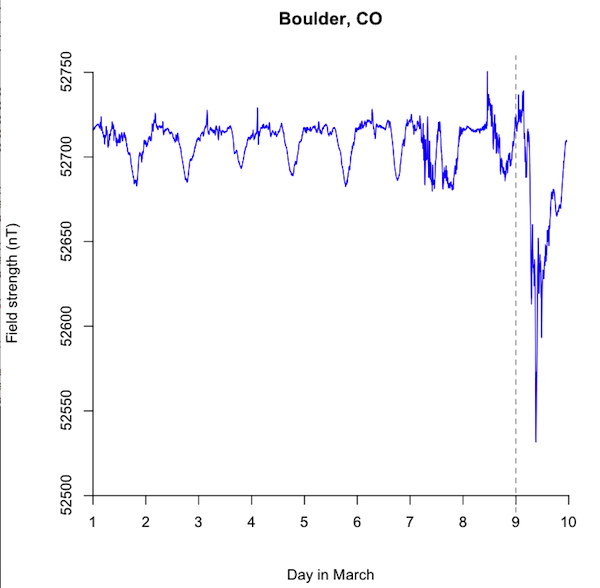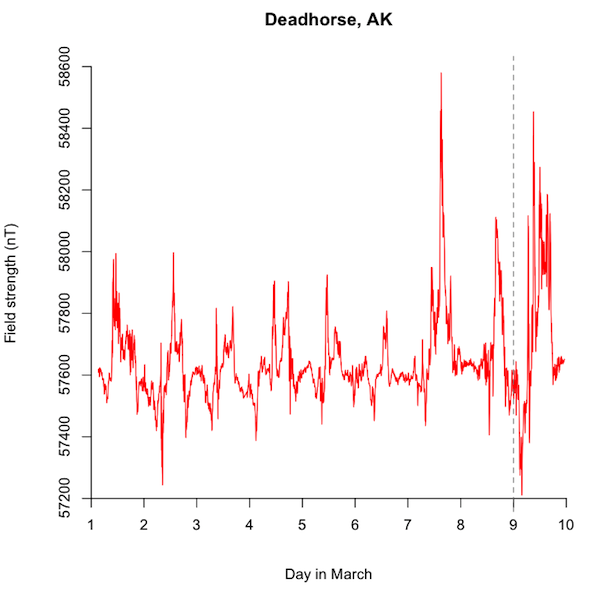![]() It appears that I was a litte premature with yesterday’s post. Look at what happened to the ambient magnetic field at the two observatories at Boulder and Deadhorse today (the dotted line represents about where the plots I put up yesterday ended):
It appears that I was a litte premature with yesterday’s post. Look at what happened to the ambient magnetic field at the two observatories at Boulder and Deadhorse today (the dotted line represents about where the plots I put up yesterday ended):
This latest fluctuation is especially prominent in the data from Boulder, although this is because the background variability is so much smaller here – the actual change in the field (150-200 nT) is actually smaller than the change observed at Deadhorse (approximately 1000 nT). Nonetheless, the fact that this fluctuation is so prominent so far from the pole shows that the magnetosphere is getting a bit of a battering.
So what’s changed? According to NASA:
As of March 8, the storm was fairly mild since the magnetic fields from the CMEs were partially aligned with Earth’s own and thus slid around the magnetosphere. However, the geomagnetic storm has increased because the magnetic fields of the CMEs have now changed direction such that they can more easily deposit magnetic energy and radiation into Earth’s environment.
So it seems the magnetic field of the coronal mass ejection was originally aligned so that the Earth’s magnetic field mostly pushed it away, in the same way that the north (or south) poles of two bar magnets repel each other if you try to put them together. But now the field has changed its alignment, making it more like what happens when you put the opposite poles of two bar magnets close to each other: they don’t take much encouragement to bang together. Still, it seems that the real-world effects are limited for now – unless you’re a field geophysicist planning to do some magnetic surveying. Rapid changes in the background field like this will drown out any changes due to changes in the subsurface, so they’ll be a few days of waiting for things to die down before any useful measurements can be made.





Comments (1)
Links (1)-
Pingback: Stuff we linked to on Twitter last week | Highly Allochthonous